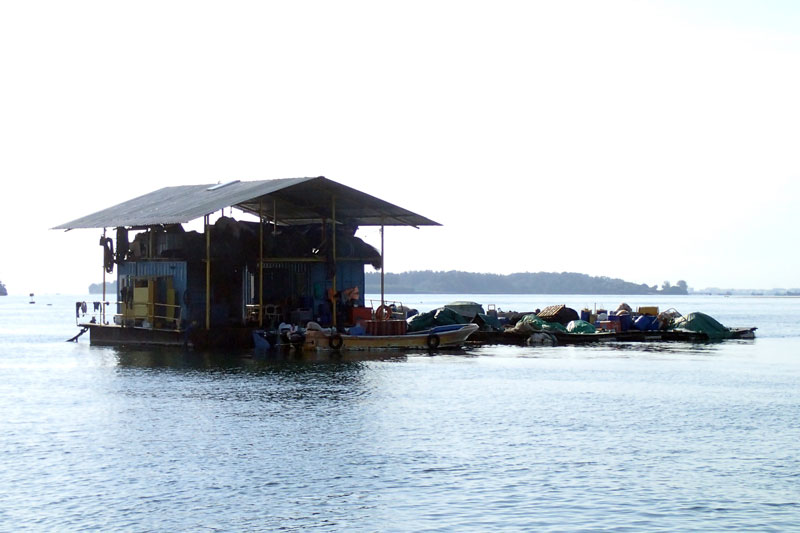A few days ago, Ria wrote a blog post about fish farm trash found and removed from the northern shore of Pulau Ubin despite the coastline being lined with security fence. The cleanup activity was coordinated by Chua Li San from Outward Bound Singapore. Officers from the Agri-Food and Veterinary Authority of Singapore (AVA) and the National Environment Agency (NEA) were invited to view the situation from the seaward side. You can read more about from Ria's blog post
here.
Today, Mediacorp's Channel 8 evening and night newscast reported about this situation and interviewed a few fish farms nearby.
Here is the news clip from Channel 8 news' youtube channel.
For the benefit of my readers who do not understand Chinese, I have translated the content of the video. It is not 100% translated but I tried my best to translate as accurately as possible the main points covered in the news report. I also did the Chinese transcribe of the video.
Translation (Coastal
trash at Northern Ubin)The northern shore of Pulau
Ubin is often seen littered with large amount of trash. In the most recent
cleanup event, volunteers removed 165 kg of trash within a day. News reporter
found out that among the list of items removed are abandoned fishnets and
chemical containing plastic drums. These items may pose threats to and damage
the ecological environment.
Narrator:
Otter rolling around on the
sand, heron resting on the fence. However, oil drums, styrofoam boxes and
plastic bags are littering all around. Outward Bound Singapore (OBS), who
regularly organises coastal cleanup for the public volunteers, commented that
such sights are common.
Interviewee (OBS):
Just two weeks
after the cleanup, we found a refrigerator here. Why are there still oil drums
present? Why are there still items used by the fish farms found here?
Narrator:
In the nearby fish
farms, a fish farmer commented that the fish farms dispose their trash in the marina country club nearby. As for the oil drums, it is possible that they were either
not securely tied or dislodged by the strong waves.
Interviewee (Fish farm):
During presence of
strong waves, the ropes securing the drums may break, resulting in the drums to
be displaced and float out. The direction in which the drums float to depends
on the direction of the wind.The wire fences on
the security barriers are old and damaged with holes. At high tide, if the
trash is floating near the holes on the fence, they will be washed through
towards the shore.
Narrator:
The fish farmers
also feedback that sometimes during strong northerly winds, trash from the
kelong of neighbouring country also gets swept in the direction of Pulau Ubin. Volunteers have
noticed fish trapped and killed by abandoned fishnets along the coastline.
Disposed plastic drums are found to have contained chemicals.
Reporter:
Although OBS and
public volunteers have access to this Northern shore on Pulau Ubin to conduct
cleanup sessions, it was not enough to resolve the root cause of this problem –
a measure to control those who discard trash illegally or those who are
irresponsible in their trash management. It is unknown, at the moment, the kind
of marine damage or pollution these trash can cause. Personnel from AVA and NEA
visited this area last Saturday (5 October 2013) to conduct some checks. AVA emphasised
that it is an offence for fish farmers to dispose their trash into the sea.
Currently, no one has been fined for such offence.
I'll be glad to update this translation should you have better translated sentence(s).
Seems like the fish farmer made it sound so easy for the floating trash to just pass through the broken security fence during high tide. I am sure that some of the items removed from the shore could not float. So how did these items get onto the shore then?
I do have some doubts about the accuracy of information in this news report.
What about you? I welcome you to raise any questions you might have from this news report. Just drop me a comment with your name.

